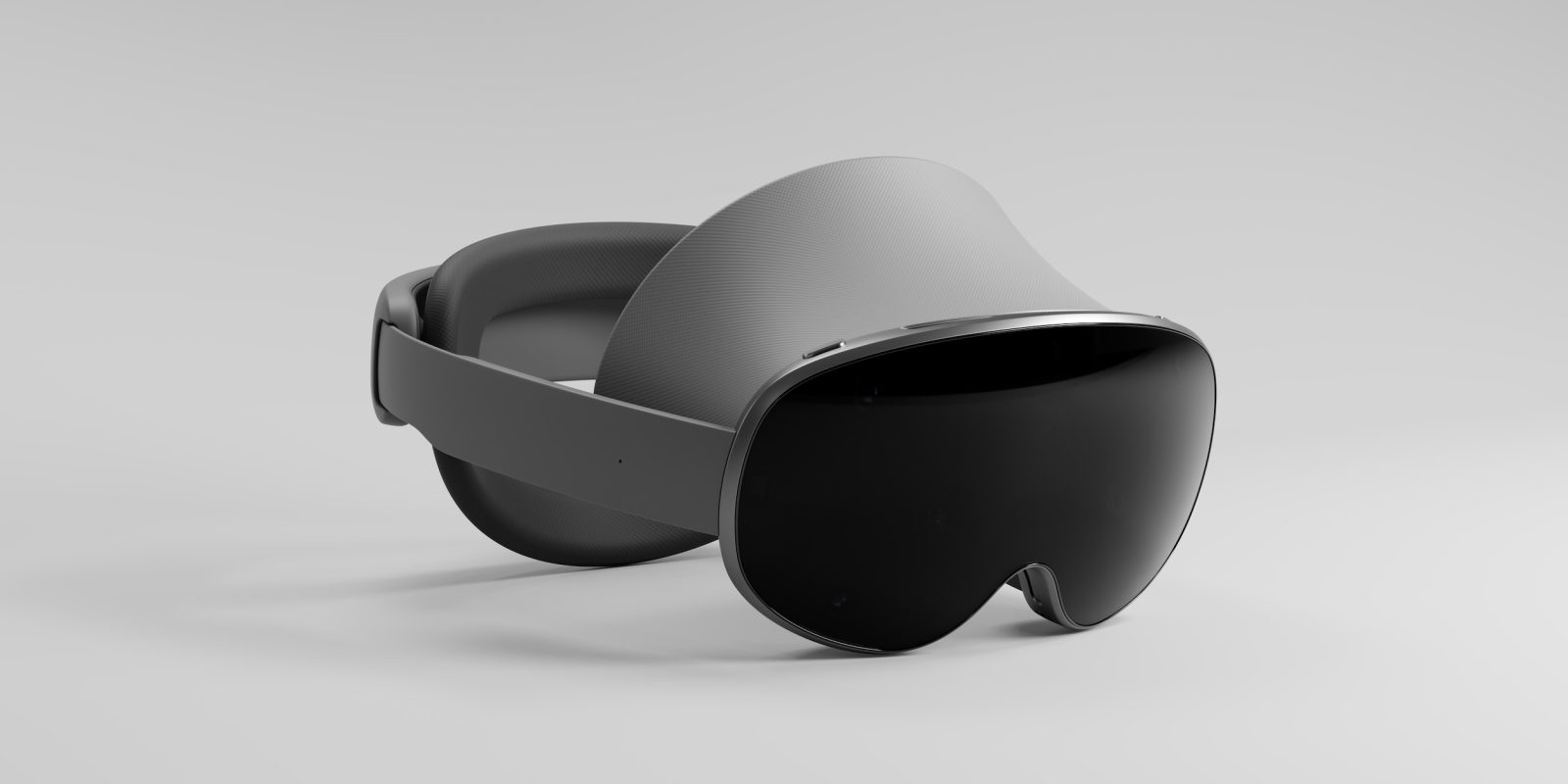
Mixed reality headsets are not new. My personal novelty with them ended upon buying Apple’s Vision Pro earlier this year. In using Samsung’s Android XR-powered Project Moohan for about 30 minutes last week, Google has got all the basics down. However, Android XR has a true differentiator with Gemini, while bringing together almost a decade’s worth of Google efforts in a seamless, integrated manner.
Hardware
During the hands-on, Google did not allow us to take pictures of the hardware, but it’s already available for some early access partners and more developers are getting it this week following an in-person event. This is close to the final hardware that will ship to consumers in 2025.
Made predominantly of plastic and powered by Qualcomm’s Snapdragon XR2+ Gen 2, Moohan is significantly lighter than the Vision Pro, which seems over engineered in comparison. By default, there’s no light seal for the area below your eyes to let you see some of the real world. However, a magnetic attachment is available and that’s how I demoed it. A dial at the back lets you tighten the fit.
There is an external battery, with a wire extending from the headset and plugging into the pack via USB-C. You will not be limited to the included unit.
The end goal is to have light, ergonomic hardware and Samsung accomplished that.
Project Moohan has a trackpad surface on the right side. You tap it to open a UI overlay that combines the time, row of Quick Settings (to open a grid-based Recents menu), and launcher grid of apps.
You bring your thumb and forefinger together – referred to as a “pinch” – to tap. There’s a “ray” that extends from your hand for pointing, as well as pinch-to-zoom. These Android XR gestures are pretty straightforward and work well.
Also of note is eye-tracking that lets you look at something instead of pointing with your hand. This works quite well in conjunction with pinching.
Software
Then there’s Gemini (specifically, Project Astra powered by Gemini 2.0), which you activate from Quick Settings, with a pill appearing above your line of sight when it’s enabled. In this mode, Gemini is listening for your commands and is aware of what you’re looking at in the virtual screen, as well as the real-world through the front-facing cameras.
If you’re watching a video and see something interesting, you can just ask Gemini. This includes translations, what a venue is home to in Google Maps, and explaining what’s happening in a YouTube video. Gemini can also answer questions about the real world. For example, if there’s someone in front of you wearing a soccer/football jersey, you can ask Gemini how that team is doing and get a Google Search Knowledge Panel with league rankings.
This is the Astra technology first demoed at I/O 2024. What’s really impressive is how you can converse with other people in the real world, while Gemini remains silently active in the background until you explicitly ask a question. Gemini can also be used to open apps and organize your windows. This is important in XR where it’s easy to get overlapping apps, especially as you move around a space.
The naturalness of asking a question about what you’re viewing without any preface or specifying further is just like having another person next to you. Frankly, this justifies all the work and effort Google has put into Gemini as of late. Voice is how you’re supposed to interact with LLMs.
In 2020, Google Photos introduced a Cinematic photos feature that simulates depth for faux 3D with any image. It seemed like a novelty to me at the time, but that effect in Google Photos for Android XR can be awe-inducing, especially with video, because it’s almost in real-size. I used the Google Photos tablet app, which can be resized to the phone version if you want, with the fullscreen viewer offering an extra “Immersive” button to enable depth.
When Google Maps announced Immersive View in 2022, I could see how it could be useful, but that’s not how I want to browse on my phone. (Also, I still think the streaming resolution is lacking with everything being blocky.) In the headset, it’s a different story. Being able to fly over a city or enter a building that was recreated from still images goes from a tool when trip planning to being something game-like that you want to explore in your free time. Google Maps goes from being a utility to a piece of content on the level of a YouTube video. Meanwhile, Street View is as delightful as you’d expect it to be.
Using Circle to Search, to select an object in your environment and learn more about it fulfills the vision of Google Lens when it was announced in 2017.
3D Animals in Google Search certainly became beloved in 2020, but I’ve always been of the opinion that phone-based augmented reality is so limiting that it’s almost a disservice to the AR. In a headset, it’s really quite immersive.
Finally, I obviously got why Google in 2021/2 with Android 12L wanted to optimize for “large screens” ahead of foldables and a renewed tablet push, but how all that work translates to Android XR is a masterclass in planning. The tablet variant of Google apps look natural in the headset without any extra work. I felt right at home using Chrome for Android’s tablet UI with desktop-esque tab strip with a physical Bluetooth mouse and keyboard.
Most 2D Android apps can run on Android XR. For Play Store availability, developers just have to opt-in. Google has optimized its key apps. When watching YouTube (which has an existing library of 3D content), the main window is the video while there are separated floating panes around it for controls, description, and the Up Next queue. There’s also spatial audio coming from that window, while Google TV offers a virtual theatre background that other apps can tap into.
I’m not sure whether Google actually knew when it was building Cinematic photos, Android for large screens, or Immersive View that they’d one day run on a headset. If they did, it reveals a stunning amount of foresight and planning for the far future that most people usually don’t give Google credit for.
Everything Google has been working on in the past decade or so, including , come together in this headset that will be available next year. Android XR seems to be on par with visionOS, while offering something wildly new yet natural with Gemini and Project Astra.
FTC: We use income earning auto affiliate links. More.
 2 hours ago
4
2 hours ago
4



















 English (US) ·
English (US) ·